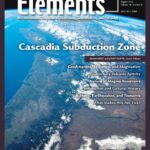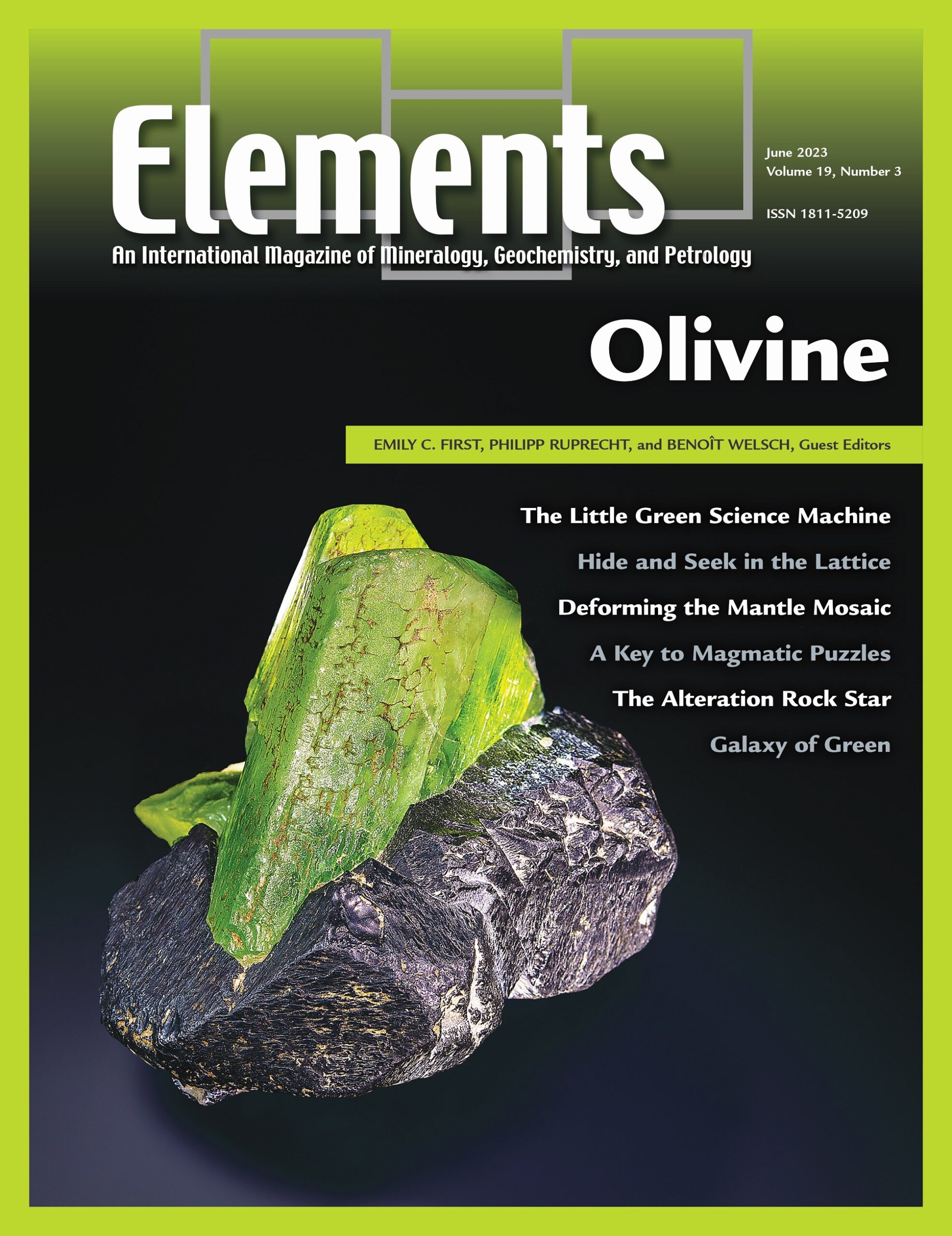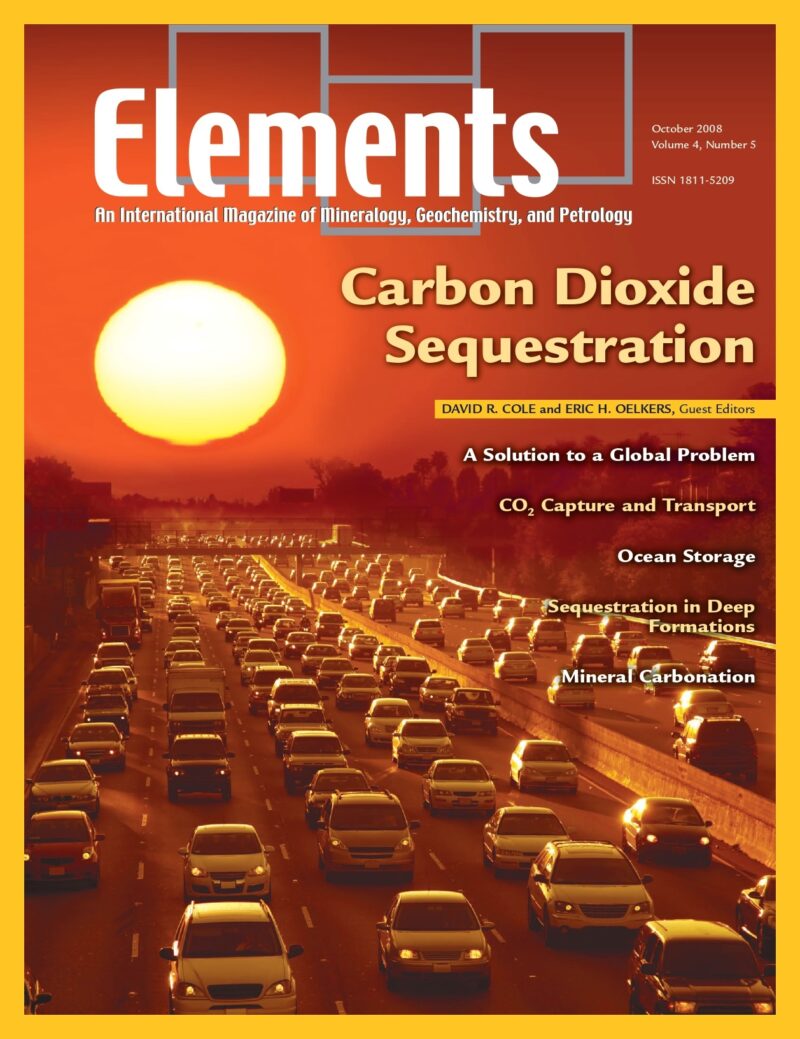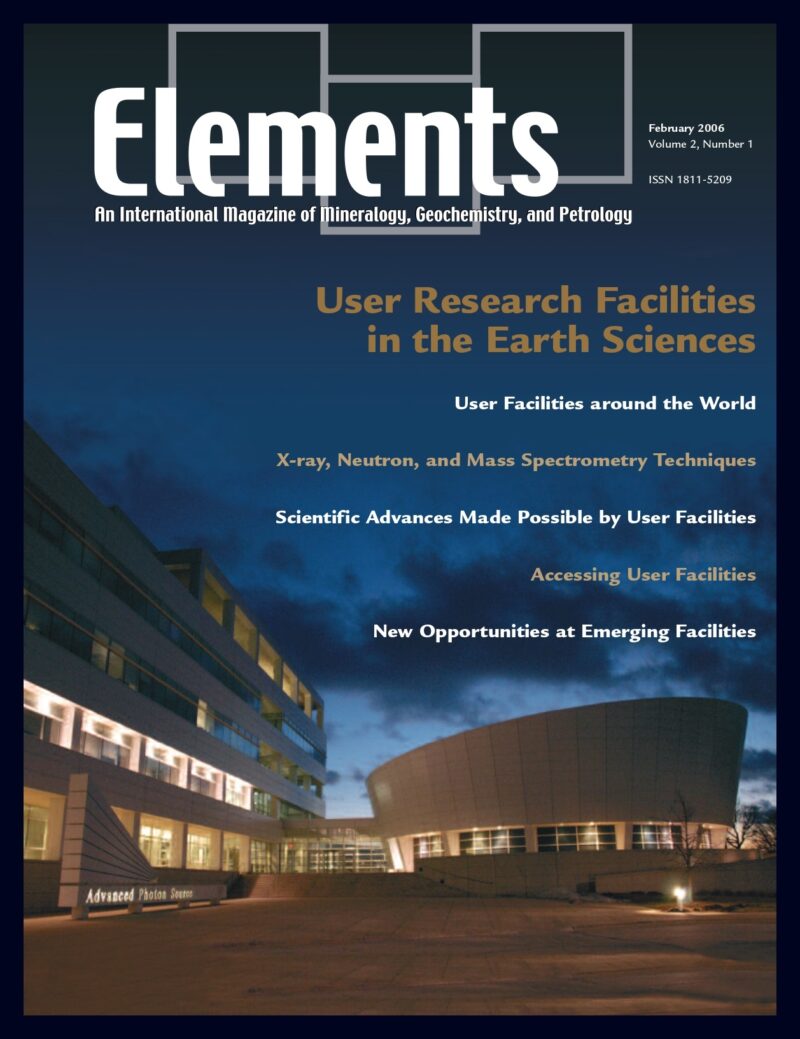
Cascadia Subduction Zone, August 2022, Vol. 18, No. 4
June 28, 2024
Biomagnetism, August 2023, Vol. 19, No. 4
June 28, 2024Olivine, June 2023, Vol. 19, No. 3
$20.00
To study the Earth and other planetary bodies, one has to understand the mineral olivine; when and where it forms, how it crystallizes and deforms, and how it responds to changing environmental conditions in the Earth’s interior, on the surface, and in space. This issue takes a look at olivine research from the atomic scale to the Solar System and beyond.
Olivine
June 2023, Vol. 19, No. 3
To study the Earth and other planetary bodies, one has to understand the mineral olivine; when and where it forms, how it crystallizes and deforms, and how it responds to changing environmental conditions in the Earth’s interior, on the surface, and in space. This issue takes a look at olivine research from the atomic scale to the Solar System and beyond. Olivine plays a critical role for plate tectonics, magma transport from mantle sources to the surface, how the Solar System differentiated and evolved, and also for the efforts addressing climate change through carbon capture and storage. This issue highlights olivine research that crosses many disciplines, from seismology and geodynamics, petrology and volcanology to low-temperature geochemistry and remote sensing.
Why You’ll Love Elements Magazine:
- Expert Contributors: Articles written by renowned researchers in the field of geoscience.
- Engaging Content: Join a community of readers who are passionate about Elements.
- Exceptional Quality: Each issue is printed on high-quality paper with stunning visuals and detailed illustrations that bring complex scientific concepts to life.
Order your copy of the June 2023 issue of Elements magazine today and explore olivine.
Related products
-
Water On Mars, June 2006, Vol. 2, No. 3
$20.00During the past several decades, spacecraft data have transformed the planets from astronomical objects into geologic worlds. Mars is the current focus of planetary exploration, and NASA’s objectives for this effort are based on the theme, “follow the water.
-
Carbon Dioxide Sequestration, October 2008, Vol. 4, No. 5
$20.00Storage of carbon in the subsurface involves introduction of supercritical CO2 into rock formations beneath the surface of the Earth, typically at depths of 1000 to 4000 meters. Although CO2 is a relatively benign substance, the volume being considered is large.
-
User Research Facilities In The Earth Sciences, February 2006, Vol. 2, No. 1
$20.00Earth scientists rely on effective access to user research facilities that provide state-of-the-art analytical instrumentation. This thematic issue focuses on some of these facilities and how to use them.




